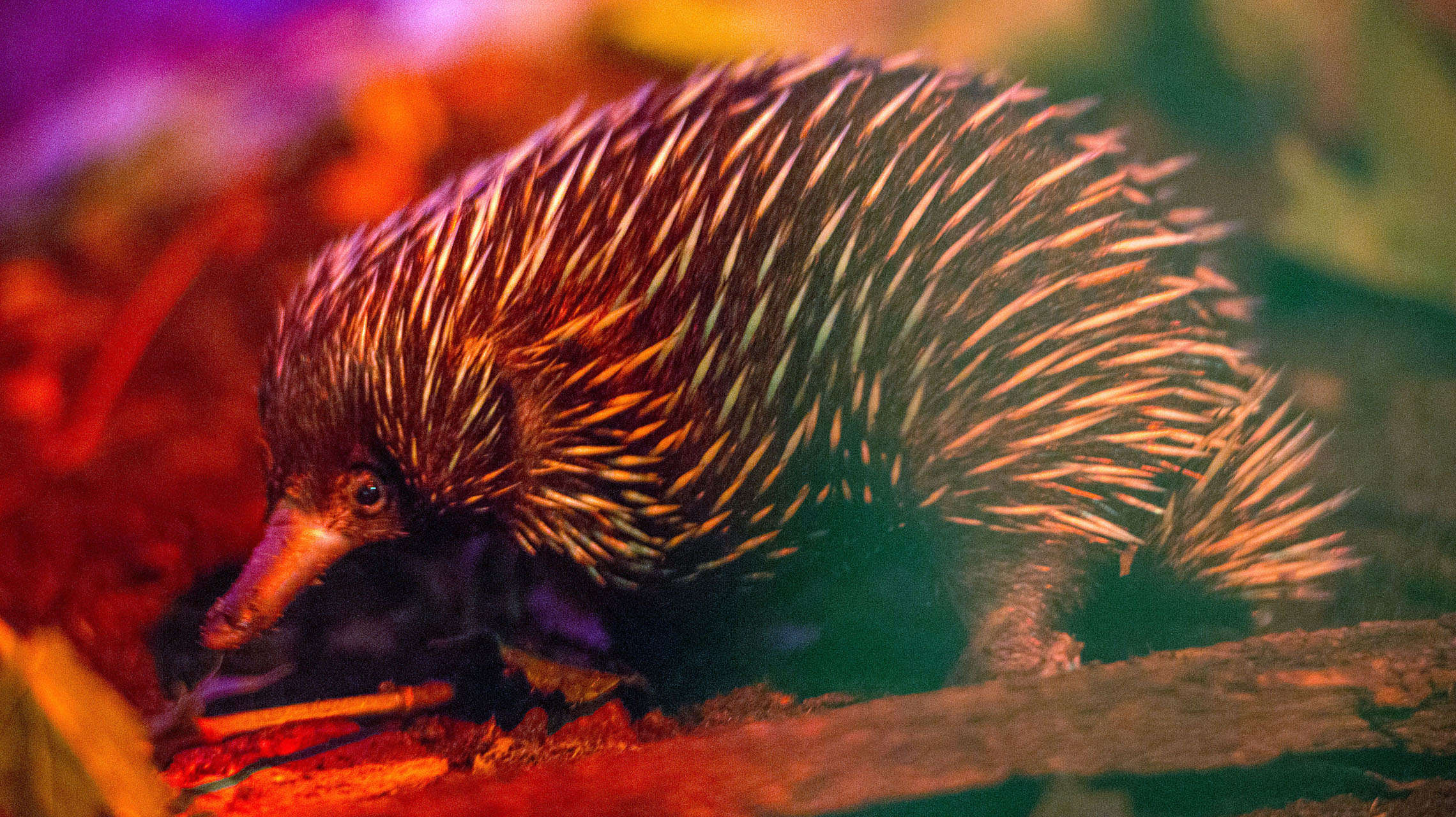What the actual… now we know why an echidna’s, uh, appendage has four heads

Echidnas already sound extraterrestrial. These spiny creatures are beaked and toothless, have long tongues that stick to the insects they eat, and though they are mammals, the females lay eggs. That that still has nothing on what the males can pull off.
It seems almost as if monotremes like the echidna and platypus got lost in evolution and ended up as mammalian-reptilian mashups. Monotremes are the only known mammals (at least on this planet) that lay eggs. They diverged from therian mammals, which include placentals like humans and marsupials, about 184 million years ago and ended up evolving some alien physical characteristics. The male echidna’s penis has four heads.
Why male echidnas evolved a four-headed appendage that is only used for mating and not urination is unknown, but biologist Jane Fenlon of the University of Melbourne in Australia, who recently published a study in Sexual Development, has her own thoughts on how the peculiar penis could have evolved.
“It's difficult to say why they evolved the way they did,” she told SYFY WIRE. “Evolution is full of experiments in trying out different options. and we only see the success stories. They probably evolved the ability to only use their penis for mating first, which gave them a lot more freedom to modify its structure.”
When not in use, the echidna’s penis is stashed internally, which makes it kind of like the amphibious humanoid creature in The Shape of Water. Echidnas urinate from a cloaca and only bring out the four-headed monster during mating season. The penises of other mammals have had to evolve around allowing for both mating and urination, but not having to worry about one of these functions probably gave the echidna an an advantage in the mating department.
Even weirder is that only two of the heads, or glans, of an echidna’s penis operate at once, since that is all the female’s double-branched reproductive tract can accommodate.
Fenlon and her team from were able to study the penises of injured echidnas from the animal hospital at the Currumbin Wildlife Sanctuary, most of which ended up on the wrong end of a moving car and didn’t make it. CT scans and several methods of microscopy revealed the mechanisms behind the function of the echidna penis. CT scans usually only pick up on hard tissue, like bone, to create 3D models, but staining the penile tissue with iodine allowed them to see soft tissue. They also had one tame echidna that was able to show off its skills.
“I'd been expecting some sort of valve mechanism to control why they only use two heads instead of four,” Fenlon said. “Instead, we found that one of the main erectile tissues in mammalian penises makes up two completely separate structures, and they can control which side is active by directing blood flow. This has never been seen in a mammal before.”
Mammalian penises are made erectile tissues known as the corpus cavernosum and the corpus spongiosum. The corpus cavernosum fills up with blood and allows it to hold an erection, while the corpus spongiosum is also filled with blood, but its primary function is to keep the urethra open for semen to pass through. Though the corpus cavernosum and spongiosum start off separate at the base, spongiosa eventually merge into one. The inverse of that happens in an echidna’s penis. Its cavernosa merge into one while its spongiosa stay apart.
That, and the major blood vessel of an echidna penis allows its urethra to separate into two, and then four, sub-branches, one for each of the four heads. Echidna sperm also travel upstream to the female’s egg in cooperative groups of up to a hundred, as opposed to human sperm, each of which has to survive on its own. Fenlon’s tame echidna was more than happy to demonstrate how it could ejaculate ten times without needing a break.
Maybe echidnas stand out among mammals, but many reptiles have hemipenes, or split penises, and others are have penises with multiple heads that are still more similar to the echidna’s. Turtles with five-headed penises actually exist Fenlon has studied that turtle group and wants to revisit it. Unlike many mammals but like many reptiles, echidnas also have no scrotum. Their testicles remain internal.
“Since they only use one side of their penis at one time, it would be interesting to see if echidnas only use sperm from one testicle at a time,” she said. “It would be very unusual if that is the case. I'd also like to have another look at those turtles to see how similar they actually are to the echidna, and to understand more about the evolution of both.”
Males of most species can stop competing now. The echidna is packing more than they ever will.




























